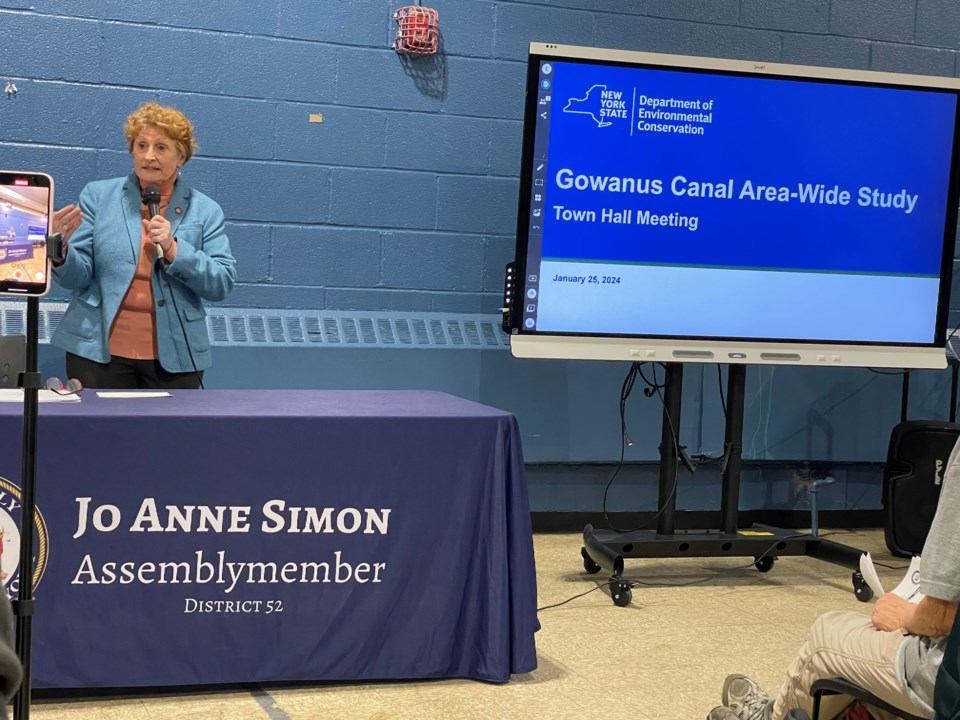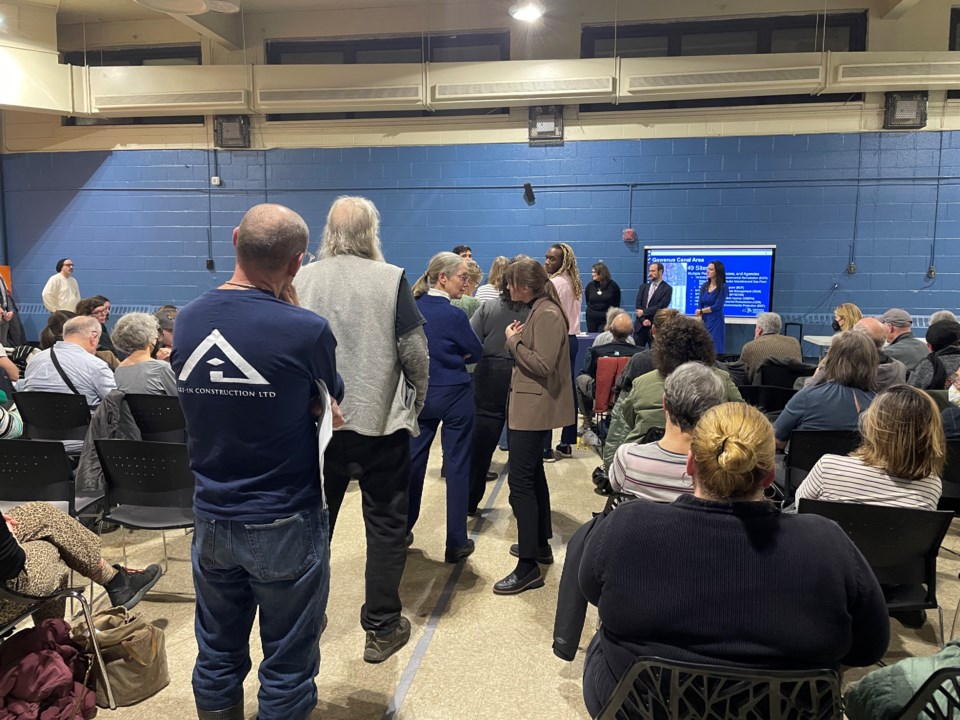Officials in charge of cleaning up the Gowanus Canal said contaminants from the waterway have leaked into the groundwater of almost 50 nearby buildings.
Through soil vapor intrusion, a process by which chemicals underground enter a building, many people living or working in a contaminated site are exposed to noxious fumes, according to Heide Dudek, a section chief of the division of environmental remediation at the New York State Department of Environmental Conservation, who spoke at a public meeting organized by Assemblymember Jo Anne Simon on Wednesday.
“So far, 49 sites have been identified as containing at least some harmful contaminants,” said Dudek. “They will need some kind of cleanup effort.”
Not all buildings near the canal have corrupted groundwater running below it, but not every building has been sampled for contamination, she added.
Retrieving samples of as many areas designated at risk for harboring harmful contaminants is crucial to protecting public health, according to Scarlett Messier-McLaughlin, a chief of the bureau of environmental exposure investigation unit at the state Department of Health.
Officials urged tenants living near the canal who want air sampling to ask their landlord to contact Richard P. Mustico at [email protected] or call him at (518)-402-9647 to schedule an appointment.
Built in the mid-1800s, the Gowanus Canal was a major industrial transportation route for close to a century. Over the decades, various chemical plants, paper mills and gas plants that sprung up alongside the canal regularly dumped toxic waste into the water with reckless abandon.
As a result, Brooklynites today are paying the consequences in more ways than one. The forum addressed the timeline of the clean-up, as well as concerns from nearby residents.
Environmental Protection Agency contractors are wrapping up the final cleanup phase of the northern stretch of the canal from Degraw to 3rd Streets. The installation of an articulated concrete mat on the canal floor will be finished by spring and topped off with a layer of sand to fill up gaps.
Construction also began for two multi-million-gallon combined sewer outfall tanks, set to be completed by the spring of 2029. The tanks will help stop overflows that carry waste from homes and industrial pollutants from storm drains.
The EPA is in the process of planning and designing the next phase of the project, which will focus on the middle section of the canal from 3rd to 9th Streets. Work is expected to begin as soon as the concrete layers are completed in the first section of the canal.
Property owners came to the meeting and voiced their frustrations with the city, state and federal officials.
Some bemoaned the lack of progress of the cleanup efforts by the city. Others were frustrated with the unclear project timelines. Almost everyone seemed enraged at the “years and years” of perceived inaction and neglect of the canal and the people who live and work nearby.
Unfortunately, like most EPA Superfund sites, the Gowanus cleanup work is meant to contain the toxic layers, not restore it back to its natural state. Messier-McLaughlin assured people the state is taking all of the preventative measures necessary.
“Our goal is to clean everything we possibly can and prevent any more damage in a way that’s protective of people and public health,” she said at the packed meeting.




.png;w=120;h=80;mode=crop)
